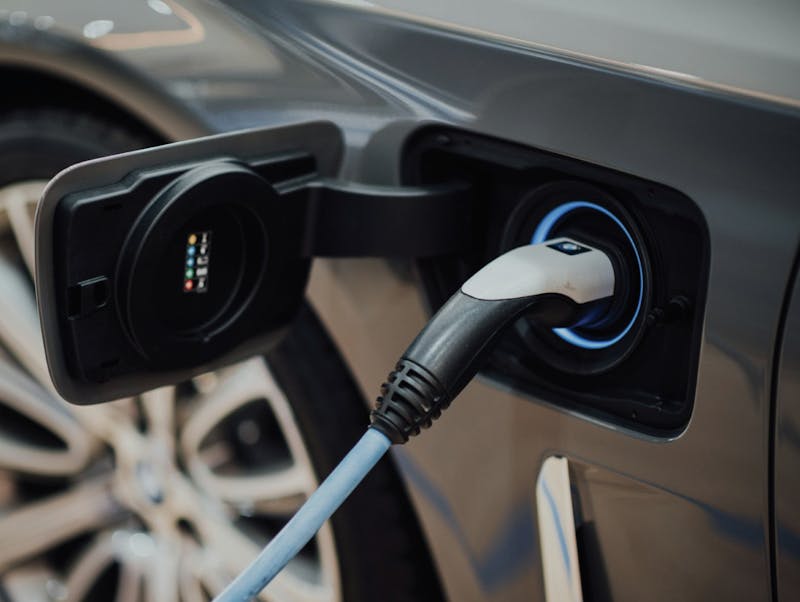
The Rise of EVs:
The automotive industry is undergoing a profound transformation with the widespread adoption of electric vehicles. Advancements in battery technology, coupled with growing environmental concerns, have propelled EVs into the mainstream market. From sleek sedans to rugged SUVs, an array of electric vehicles now grace our roads, the allure of EVs is their promise of reduced emissions and diminished dependence on fossil fuels.
However, amid the excitement surrounding the rise of EVs, it’s essential to acknowledge the unique legal challenges they present, particularly in the event of accidents. Unlike their gasoline counterparts, which rely on combustible fuels, EVs are powered by lithium-ion batteries – a technology that brings with it its own set of risks and complexities. In the event of a collision, the structural integrity of an EV’s battery pack can be compromised, potentially leading to thermal runaway and the risk of fire. While such incidents are rare, they underscore the importance of understanding the distinct safety considerations associated with electric vehicles.
From a legal standpoint, determining liability in EV accidents can be intricate. Is the manufacturer culpable for producing a defective battery? Did the driver’s actions contribute to the collision? These are questions that legal experts must grapple with as they navigate the complexities of EV-related litigation.
Common Issues Associated with Electric Vehicles
Aside from battery issues, electric vehicles are known to experience a plethora of issues which can put you and other drivers at risk:
Battery Degradation: Over time, EV batteries can degrade, resulting in reduced driving range and performance. In higher temperatures, though rare, older EV batteries have a much higher chance of fire or explosion.
Charging Hazards: Improper charging practices, such as using damaged charging cables or connecting to faulty outlets, could result in electrical hazards that harm the driver.
Braking System Failure: While EVs typically use regenerative braking, which is less prone to failure compared to traditional brake systems, malfunctioning brakes could still pose a safety risk to the driver and passengers.
Cold Weather Performance: EVs may experience reduced range and efficiency in cold weather conditions due to factors such as battery chemistry and increased energy demand for heating the cabin.
Autonomous Driving and Liability:
As automakers vie to bring more self-driving electric vehicles to market, questions surrounding liability loom large. In cases where an EV malfunctions and causes an accident, determining who bears responsibility can be a contentious and multifaceted issue.
Legal precedents in this domain are still in their infancy, with courts grappling with the intricacies of assigning liability in cases involving autonomous systems. The lack of clear legal frameworks and established precedents adds uncertainty to the landscape, leaving both manufacturers and consumers in uncharted territory. Despite these challenges, the promise of autonomous driving technology to reduce human error and improve road safety is undeniable. Proponents argue that self-driving vehicles have the potential to dramatically reduce the number of accidents caused by human error, saving countless lives in the process.
As autonomous technology becomes increasingly integrated into electric vehicles, it’s essential to address the legal and regulatory hurdles that accompany its adoption. From establishing clear standards for safety and accountability to developing robust mechanisms for resolving disputes, stakeholders must work collaboratively to navigate the complex intersection of autonomy and liability.
Case Study: Assessing the Role of Drivers and Autonomous Systems in Collisions.
In a recent high-profile case, the intersection of electric vehicle technology and autonomous driving systems collided head-on with the complexities of liability and accountability. The accident unfolded when a semi-autonomous electric vehicle, equipped with advanced driver assistance systems (ADAS), collided with another vehicle at an intersection. Initial investigations suggested that the autonomous driving system failed to detect a red traffic signal, leading to the collision.
As news of the accident spread, attention quickly turned to the question of liability. Was the manufacturer of the autonomous vehicle responsible for the malfunctioning software that failed to recognize the traffic signal? Or did the driver, who was expected to remain attentive and ready to take control of the vehicle if necessary, bear partial responsibility for the collision?
The case underscored the complexities inherent in assigning liability in accidents involving autonomous systems. With both human and machine factors at play, determining culpability required a nuanced understanding of the technology, regulatory standards, and legal precedents.
This incident highlighted the need for clear protocols and procedures for investigating accidents involving electric and autonomous vehicles. As the automotive industry continues to push the boundaries of innovation, regulatory bodies and law enforcement agencies must adapt swiftly to keep pace with emerging technologies and ensure accountability.
Charting the Legal Road Ahead
From the risk of battery fires to the complexities of autonomous driving technology, the legal landscape of electric vehicle accidents is evolving rapidly, presenting both opportunities and obstacles for stakeholders across the automotive ecosystem. As manufacturers innovate and regulators adapt, it is essential to prioritize safety, transparency, and accountability to ensure that the benefits of electric mobility are realized without compromising public trust or well-being.
At the heart of the legal considerations surrounding EV accidents lies a fundamental commitment to justice and fairness. Whether advocating for accident victims, advising manufacturers on risk management strategies, or shaping regulatory frameworks, legal professionals play a pivotal role in shaping the future of electric mobility. Moving forward, it is imperative that stakeholders collaborate proactively to address the legal and ethical challenges posed by electric vehicles.
Navigating the Legal Landscape of Electric Vehicle Innovation
In the landscape of electric vehicle (EV) innovation and adoption, the legal considerations are as critical as the technological advancements themselves. As EVs surge into the mainstream, promising cleaner, more sustainable transportation, they also bring unique challenges and complexities, from battery safety to liability in autonomous driving scenarios. The intersection of electric mobility, autonomy, and liability demands a proactive approach from all stakeholders: manufacturers, regulators, legal professionals, and consumers alike. Clear protocols, robust regulatory frameworks, and a commitment to safety and accountability are paramount as we navigate this transformative era in the automotive industry. By collaborating effectively and addressing these challenges head-on, we can ensure that the promise of electric mobility is realized while upholding the principles of justice and fairness for all.
Navigate the aftermath of a car accident with confidence alongside Turnbull, Moak, & Pendergrass. Our unwavering commitment to client safety and advocacy is unparalleled. In the face of adversity caused by negligence, our seasoned team stands ready to provide unparalleled support. Whether in Atlanta, GA, Houston, TX, or Birmingham, AL, our offices await to extend a helping hand. Don’t hesitate, reach out today and let us champion for your rights.

